Are you looking for a great workout to increase your strength? You won’t find it here. Want more muscular endurance? Nope, this isn’t the place for that. How about flexibility … explosive power … cardiorespiratory endurance? Nada, Zip, Zilch. There are more free resources on the web than you could ever read in a lifetime on any of those subjects. This blog post does not seek to add to that resource base. The fact is, martial arts training will *by default* improve ALL of those things! But what if your goal is not one of those (although they are nice “side effects”) but rather simply to stay on track with your training? If you are on the martial path, you are no doubt learning an organized curriculum, and you need to stay focused on the next milestone: the next belt rank. What you will be hard pressed (trust me, I did the research already) to find is a resource to guide your training toward achieving the next belt level. This blog post was designed for “leveling up” in mind. And if you are a new Shotokan student who seeks the yellow belt – this post is especially for you!
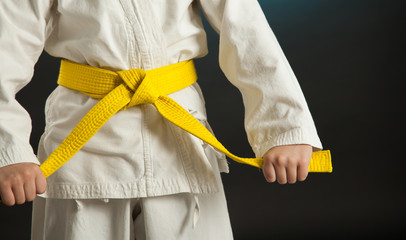
GMAU Shotokan Yellow Belt Requirements
To be eligible for the yellow belt test, a student must log in a minimum of 36 hours. It is recommended that you follow some combination of the sample training routines listed below (each one involves 30 minutes of work / excluding warm-up and cool-down) for a total of at least 3 hours per week. At that rate, you will be eligible to test for yellow belt in 12 weeks (3 months). The training routines outlined in this blog post are merely examples. Use these (and your own creativity) to come up with your own routines. Also, there are nearly 17 hours of GMAU lesson and classes in the yellow belt portal alone. Those pre-recorded classes are an amazing resource at your disposal to keep you motivated and they all reinforce the “3 Ks” of karate. This Excel file provides a guaranteed plan to help you get in the required 36 hours to be eligible for yellow belt testing using a combination of Instructor-Led classes from the GMAU Shotokan Yellow Belt Training Library and the sample routines described below.
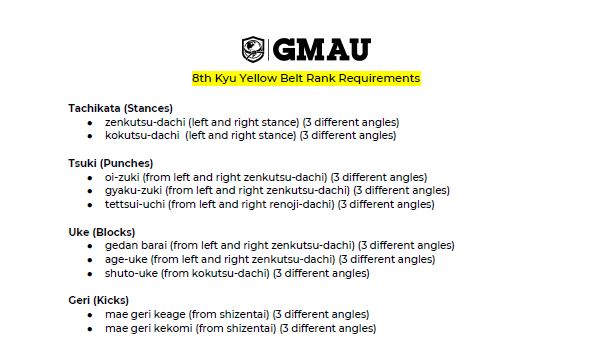

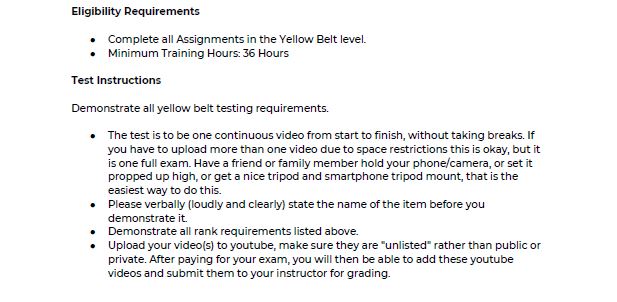
KIHON + KATA + KUMITE
The “3 Ks” of Karate are kihon, kata and kumite. Kihon means Basics. Basics are the fundamentals of our art or style. In Karate, basics include punches, kicks, blocks, strikes and stances. Kata means Form. Forms are sequences of movements that are put together in an overall pattern that we must memorize. Kumite involves “pre-planned” or “freestyle” sparring. Any of these can be done alone, with a partner or in a large class. At every belt rank in the GMAU Shotokan program you will do all three. Below is a list of yellow belt requirements, followed by a specific workout plan designed around each of the “3 Ks”.
Kihon Routines
These “basics” are the foundations of karate training. You will see white belts and high level black belts practicing and perfecting kihon. The mastery of kihon is essential to all advanced training, and includes the practice of correct body form and breathing. Kihon techniques should be a major component of the overall training plan, often practiced during each training session. Kihon are considered the most important aspects of karate – sort of like the foundation of a house.
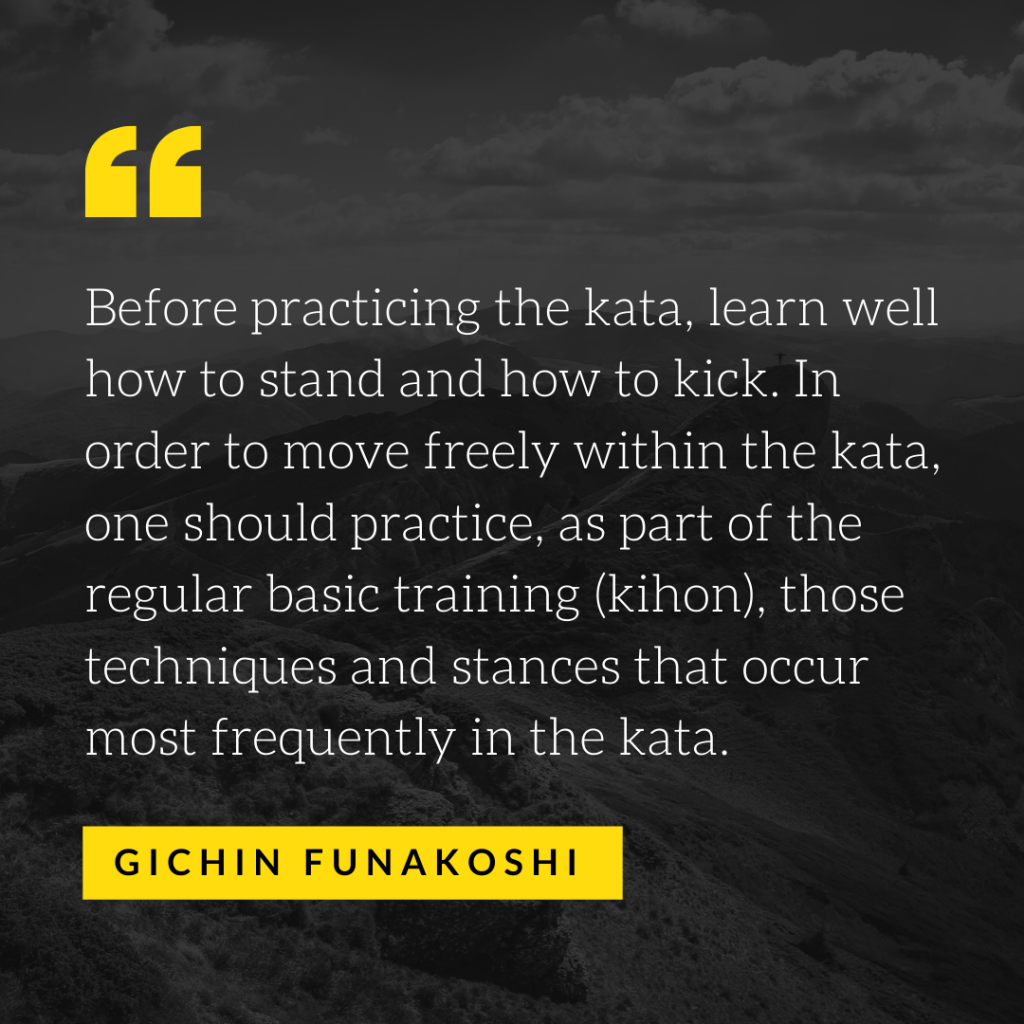
Routine #1: Static + Dynamic Kihon Training
- Warm Up – Do an “active warm up” for 5-10 minutes, be sure to break a light sweat
- Phase 1 – Perform the following kihon 10x both sides from a static (non-moving) stance: zenkutsu-dachi (front stance) or kokutsu-dachi (back stance) unless otherwise noted:
- choku-zuki (straight punch)
- age-uke (rising block)
- gedan barai (down block)
- shuto-uke (knife hand block in renoji-dachi “L stance”)
- tettsui-uchi (hammer fist strike in renoji-dachi “L stance”)
- Hands down by your sides, kicking mai-geri keage (front snap kick)
- Hands down by your sides, kicking mai-geri kekomi (front thrust kick)
- Phase 2 – Perform the following kihon 10x both sides from a static (non-moving) stance: zenkutsu-dachi (front stance) or kokutsu-dachi (back stance) unless otherwise noted:
- zenkutsu-dachi (front stance)
- kokutsu-dachi (back stance)
- chudan oi-zuki (front lunge punching) (stomach level) in zenkutsu-dachi (front stance)
- gyaku-zuki (reverse punch) in zenkutsu-dachi (front stance)
- age-uke (rising block) in zenkutsu-dachi (front stance)
- gedan barai (down block) in zenkutsu-dachi (front stance)
- shuto-uke (knife hand block) in kokutsu-dachi (back stance)
- Cool Down – This should take 10-15 minutes and is the best time for static stretching, which will reduce muscle soreness and increase your range of motion
Routine #2: Contact Training
- Warm Up – Do an “active warm up” for 5-10 minutes, be sure to break a light sweat
- Phase 1 – Perform the following kihon for 3 minute rounds (“in the air”):
- oi-zuki (lunge punch, both sides) – from left and right zenkutsu-dachi (front stance)
- gyaku-zuki (reverse punch) – from left and right zenkutsu-dachi (front stance)
- mae geri keage (front snap kick) – from shizentai (natural stance)
- shuto-uchi (knife hand strike) – from left and right kokutsu-dachi (back stance)
- mae geri kekomi (front thrust kick) – from shizentai (natural stance)
- Phase 2 – Perform the following kihon for 3 minute rounds (on a heavy bag):
- oi-zuki (lunge punch, both sides) – from left and right zenkutsu-dachi (front stance)
- gyaku-zuki (reverse punch) – from left and right zenkutsu-dachi (front stance)
- mae geri keage (front snap kick) – from shizentai (natural stance)
- shuto-uchi (knife hand strike) – from left and right kokutsu-dachi (back stance)
- mae geri kekomi (front thrust kick) – from shizentai (natural stance)
- Cool Down – This should take 10-15 minutes and is the best time for static stretching, which will reduce muscle soreness and increase your range of motion
Kata Routines
Shotokan Yellow Belt kata include Taikyoku Shodan (kihon kata) and the first Heian Shodan (first traditional kata). These should therefore be the focus of the routines described below.

Routine #3: Focus On One Kata
- Warm Up – Do an “active warm up” for 5-10 minutes, be sure to break a light sweat
- Perform the kata in its entirety (5-7 times with a 30-second rest period for a total of 15 minutes)
- Select one or two sequences, performed repetitiously (for a total of 15 minutes)
- Cool Down – This should take 10-15 minutes and is the best time for static stretching, which will reduce muscle soreness and increase your range of motion
Routine #4: Alternating Speed Kata Training
- Warm Up – Do an “active warm up” for 5-10 minutes, be sure to break a light sweat
- Perform the entire kata at a slow pace, medium pace, and fast pace (alternate the pace for a total of 15 minutes)
- Perform the entire kata at a slow pace (for a total of 5 minutes)
- Perform the entire kata at a medium pace (for a total of 5 minutes)
- Perform the entire kata at a fast pace (for a total of 5 minutes)
- Cool Down – This should take 10-15 minutes and is the best time for static stretching, which will reduce muscle soreness and increase your range of motion
Kumite Routines
The aims of kumite drills are to teach students how to reacting to attacks while maintaining correct distance. It also improves awareness of the defender as s/he must prepare to deal with consecutive attacks and time a counter attack.
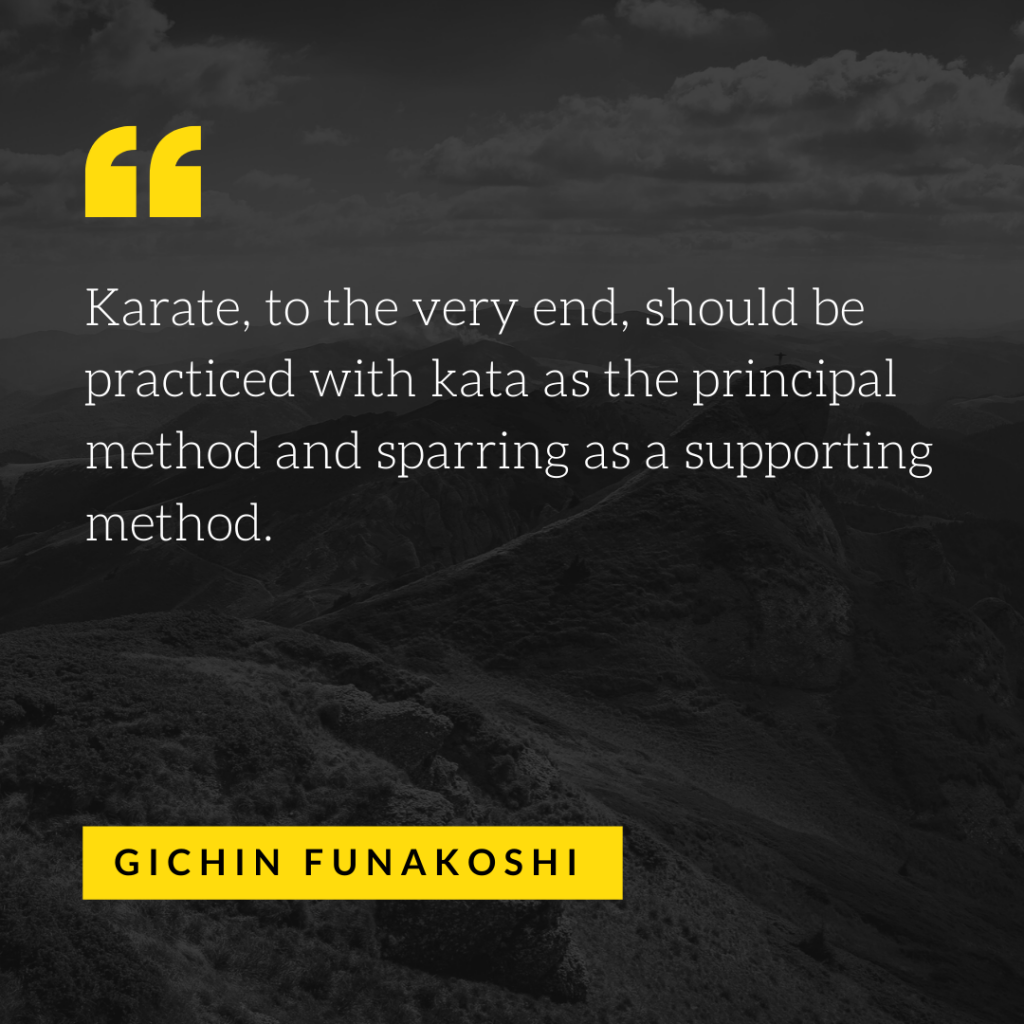
Routine #5: Ippon Kumite & Sanbon Kumite
- Warm Up – Do an “active warm up” for 5-10 minutes, be sure to break a light sweat
- Perform Ippon Kumite (Jodan) – one step sparring focused on high level blocks and counters – for 10 minutes
- Perform Ippon Kumite (Chudan) – one step sparring focused on middle level blocks and counters – for 10 minutes
- Perform Sanbon Kumite – three step sparring – for 10 minutes
- Cool Down – This should take 10-15 minutes and is the best time for static stretching, which will reduce muscle soreness and increase your range of motion
The Road To Blackbelt
Earning a black belt can be the most rewarding experience of a lifetime, but getting there takes considerable planning. By the time a student has reached black belt, they have spent hundreds, if not thousands of hours in the dojo (studio). Training in karate is not only a physical endeavor, it is a mental, moral, and emotional one as well. I’d like to wrap up this post with some “big picture” thoughts for you to consider…

You Are In Control
Maybe you chose your martial art to learn self defense, get in shape, compete in tournaments, or discover yourself. Whatever your motivations, while your instructor will show you the path, he or she cannot walk the road for you. Life “happens” and you might have to miss a practice, or take some time off. Family, job, and other responsibilities can easily pull you in different directions. Don’t let these distractions stop you or get you down.
More Than Technique
While the black belt test will verify that you “know your stuff”, technique is just part of what makes a black belt. Your instructor will determine how well you can bring together all the techniques you’ve learned and apply them as a whole. In other words, you need to demonstrate understanding of the art of your martial art. That is the central purpose of belt testing – to be sure you have a grasp on the fundamentals, before you move on to the intermediate levels, preparing you to study advanced material.
Be In It For the Long Haul
“Staying the course” is all about staying consistent even when it is difficult, unpleasant or takes a long time. Doing so produces (and requires determination) and that quality is central to never giving up. So, no matter what, stay the course!
Black Belt Is The True Beginning
Many people who reach black belt (and quit) think they’re finished with martial arts. The truth is, black belt is not an end goal, it is the beginning of a long-term commitment that will change your physical, mental and spiritual being in a way that you can only understand if you take the journey.
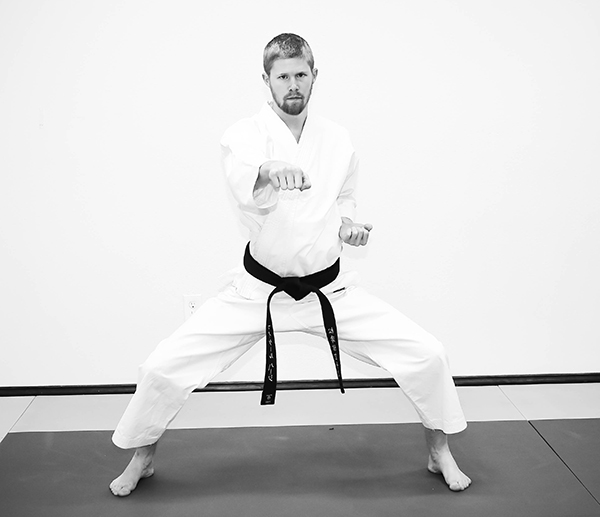





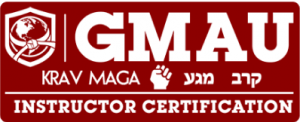



Hi Sensei,
Thank you very much for sharing this outline of requirements for 8th Kyu. I think you have done an excellent job of tying all the requirements together! I am hoping you are planning to develop similar outlines for the other ranks.
Respectfully,
Johnny Tureaud
Johnny,
Thank you for the positive feedback. If we continue to get this type of response, we will indeed do more of these. Take care and happy training, sir!
Joel Williams
Johnny – Thank you for the positive feedback. Happy training to you!
Pingback: Starting Martial Arts Over 40: What You Need to Know – Global Martial Arts University
Have you considered adding some videos to the article? I think it will really enhance viewers understanding.
Thank you for the feedback. We integrate videos whenever possible.
Excellent read, I just passed this onto a friend who was doing a little research on that. And he actually bought me lunch because I located it for him smile So let me rephrase that: Thanks for lunch!
Thank you for the feedback and for sharing!
thank you so much for putting everything in relation reaching the goal of yellow belt. my maiden search has come to an end for my new beginning. thanks a ton.
I appreciate your message. Best wishes in your training!